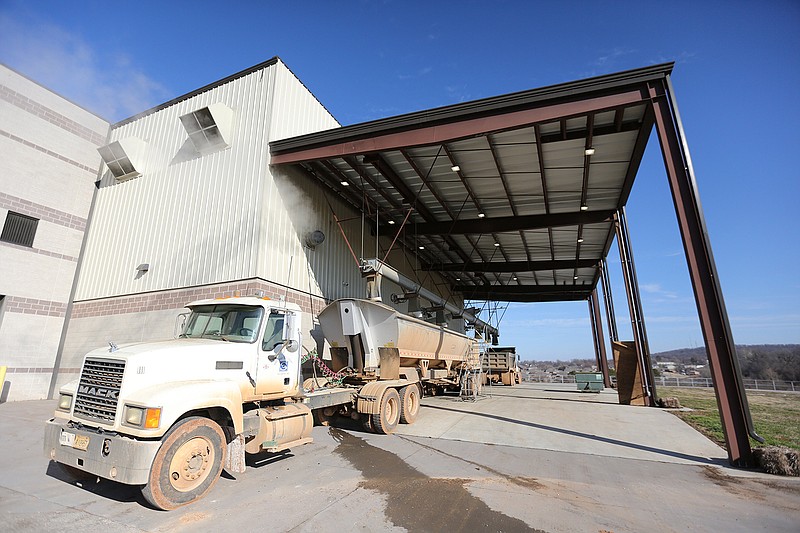SPRINGDALE -- The Water and Sewer Commission on Wednesday heard a report on ways to increase the capacity of sewer service on the southeast side of Springdale and in the city of Johnson. The measures could ensure planned development projects have enough sewer capacity through the year 2045.
Springdale Water Utilities, overseen by the commission, also provides sewer service in Johnson.
The solution could include storage tanks at pumping stations along the line, additional force main pipes or a combination of both. Chris Dougherty and Brad Hammond of engineering firm Olsson gave the presentation.
The project would cost about $22 million, said Heath Ward, executive director of Springdale Water Utilities. He expects the commission to pay some of the cost from utility revenue and capital funds and some from borrowed money.
He noted the utility is eligible for loans with 1.5% interest rates from the Arkansas Natural Resources Commission. The utility current holds a $2 million loan from the commission for the cleanup of the former Bethel Heights wastewater system.
Ward said he expects the construction of the southside sewer system to take about two years.
Heavy rain currently can overwhelm points in the city's sewer system, said Dougherty, an engineer. But the Water and Sewer Commission also needs to have infrastructure in place to serve Springdale to the year 2045, said Chris Weiser, chairman of the commission.
The Northwest Arkansas Regional Planning Commission estimates Springdale's 2045 population at 154,000 people, a 2.5% growth rate from the 2020 population of 87,400. Johnson census figures for 2020 show 3,631 residents.
The Springdale Planning Commission has approved the construction of nearly 2,000 residential units in the southeastern quadrant of the city, Ward said. A 1,700-unit development is planned for Johnson, Hammond added.
Ward in February 2022 told the commission the utility couldn't guarantee new development in the southeast quadrant of town would have sanitary sewer service without upgrades to the city's system. He said the utility might have to place a moratorium on new housing development without the upgrades.
Ward reported Wednesday the utility engineers are approving sewer capacity for projects on a case-by-case basis, depending on the scope of the project. He also pointed out that many developments approved by the utility and the city have not begun construction.
Olsson engineers analyzed the drainage basins served by the utility's Butterfield Coach, Clear Creek, Johnson and Robinson Avenue pumping stations, Dougherty explained.
Water from the east side of the city flows first into the Butterfield Coach station and is pumped through two 12-inch pipes to the Clear Creek station, according to a diagram Dougherty presented. Water from Clear Creek is pumped through a 16-inch line to the Robinson Avenue station. Water from the Johnson station is pumped to Robinson Avenue through a 16-inch pipe.
At Robinson Avenue, all water from the southeastern parts of the city and Johnson is pumped through a 24-inch line to the city's wastewater treatment plant on Silent Grove Road, Dougherty concluded.
Water also can enter the system through storm gutters at many points along the line, Ward said.
Olsson analyzed the system's current operation for a simulated five-year, 24-hour storm, Dougherty said. A storm like this has a 20% chance of hitting the area at any time, he said. The rain would accumulate at about two-tenths of an inch an hour with a total 4.6 inches in 24 hours, Dougherty said.
The water flowing into the Johnson and Robinson lift stations currently would exceed the stations' capacity to pump starting about 12-18 hours into the storm, Dougherty reported. The Clear Creek station would be working at capacity. The Butterfield Coach station still has capacity to weather the storm.
The study also considered the pumping stations with their current rate of operation but increased population during the same storm in 2045.
The utility's staff engineers, over the next month, will consider four plans Olsson presented or create a hybrid of several plans, Ward said. He said he expects make a recommendation to the commission and present for approval contracts to begin the design work for the project at the next commission meeting Feb. 15.
